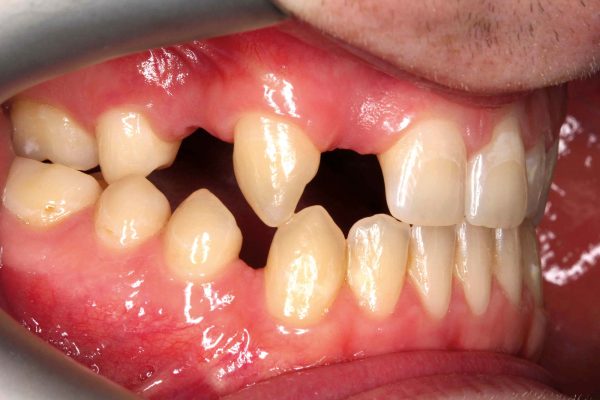Neil Millington describes how dynamic navigation enabled him with an accurate implant placement in narrow spaces using a flapless approach.
A general dental practitioner referred a 21-year-old male to Carisbrooke Dental Practice. He wanted to explore the possibility of having the spaces at the upper right lateral incisor (UR2) and also the first premolar (UR4) sites restored with implant treatment.
The patient had a history of ectopic canines, microdontia and hypodontia. He had also recently completed a course of orthodontic treatment at Peterborough Hospital to concentrate the spacing at the UR2 and UR4 positions (Figure 1). He was consequently wearing a removable retainer full-time.

Figure 1: The patient had recently completed a course of orthodontic treatment to concentrate the spacing at the UR2 and UR4 positions
Initial examination
The patient’s teeth were generally conical in shape. There wash thin enamel, and areas of hypoplastic enamel buccal to the upper anterior teeth. Enamel erosion was evident, particularly on the palatal aspect of the upper anterior teeth.
The edentulous spaces at UR2 and UR4 demonstrated good attached gingiva. They appeared to have sufficient vertical bone height, but there was significant buccal bone loss. Following a discussion about dietary factors relevant to enamel erosion, we explained treatment options for the edentulous spaces.
Considerations for treatment
The options included provision of a removable partial denture. Resin-retained bridges were another possibility. Using a metal or zirconia wing attached to the second premolar (UR5) to replace the UR4, and to the canine (UR3) to replace the UR2. Conventional cantilever bridges, attached to the UR5 and UR3, or the placement of two implants into the UR2 and UR4 spaces were also considered.
Register to access the full article & more exclusive content
Sign up to receive free access to peer-reviewed articles, podcasts, webinars and enhanced CPD.
Register
Login
Let’s block ads! (Why?)





